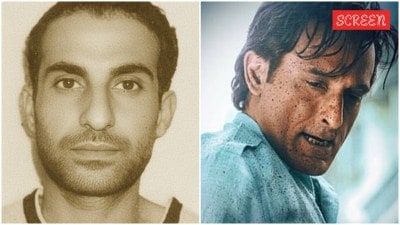Decoding the career paths of top IITians: Fascinating trends, outcomes of JEE Advanced over nearly a decade
Debarghya Das, a data geek and founding member of Glean, a California-based startup, the career outcomes of the top 250 rankers of IIT-JEE (now known as JEE Advanced) from the years 2009 to 2016. The study focused on examining their industry preferences and destinations of choice. Here's what he found
 We acquired the official JEE ranked list and hired human raters to label the top ~250 or so rankers for every JEE from 2009—16. (Graphics by Angshuman Maity)
We acquired the official JEE ranked list and hired human raters to label the top ~250 or so rankers for every JEE from 2009—16. (Graphics by Angshuman Maity) — Debarghya Das
Although the IIT is the most coveted engineering college in India, an aspiration for over a million students every year, there is painfully little data on the outcomes of IITians in aggregate over the years. In the first study of its kind, we tracked the outcomes of the top 250 IITians over 8 years of JEE from 2009 to 2016. In other words, these are the top 25 to 32-year-old IITians today. It turns out that nearly half of the 30 to 32-year-olds (JEE 2009-11) are in the United States as opposed to a mere 20% of the 25-year-olds (JEE 2016).
JEE Advanced 2023 | AIR 1 | AIR 2 | AIR 3 | AIR 4 | Female topper | Overall analysis | Seat matrix |
That could mean two things — either more IITians are choosing to stay back in India today or do IITians typically move to the US en masse at an older age in their late 20s?
 A graph explaining which country the IIT JEE top rankers prefer to move
A graph explaining which country the IIT JEE top rankers prefer to move
Which industries do JEE Advanced toppers prefer?
Aside from location, the other axis we studied was industry. About 40-50% were in big technology companies, most commonly Google, Facebook, Microsoft and Amazon. We label students in school for their MS, PhD and as Professors as “Academia”, so it’s not surprising that about 20% of 25-year-olds are doing their Masters, and that number declines to 10% for 32-year-olds, primarily post-docs and professors.
Around 15-20% were in tech startups (Rubrik, Glean, Databricks), 10% in Finance, 2-3% Entrepreneurs, 2% Consulting. Perhaps the biggest change is Trading, which is about 5% for 28-32 year olds, 10% for 26-27 and 16% for 25 year olds. Trading is much more popular amongst the youngsters. Of course, most of the top 250 rankers choose Computer Science at IIT Bombay or IIT Delhi, which tremendously biases these outcomes.

Methodology
We acquired the official JEE ranked list and hired human raters to label the top ~250 or so rankers for every JEE from 2009—16. They were instructed to find the correct LinkedIn, using common sense heuristics to match on name and double checking that IIT (typically Computer Science) of the right year was on their LinkedIn. Of course, not all names could be matched — some names are too common to disambiguate and some don’t have LinkedIn. Overall, we could match 75-80% of the top 250, or about 175—200 a year.
- 01
- 02
- 03
- 04
- 05































